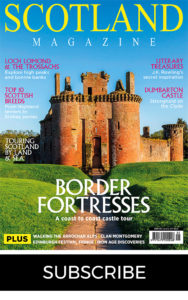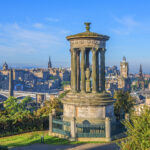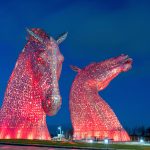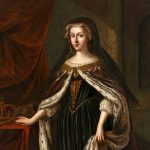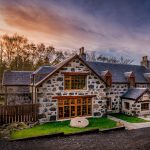MORE FROM SCOTLAND MAGAZINE
The real Macbeth and the House of Dunkeld: Early Kings of Scotland
In the next part of a series heralding the kings and queens of Scotland, we pick up the story with the family of the real Macbeth
With the death of Malcolm II in AD1034, the reign of the House of Alpin came to an end. Malcolm had died without any living sons, so the kingship passed through his daughter Bethóc, who had married Crínán, the hereditary abbot of Dunkeld, and had given birth to a son. That son was now Duncan I, King of Alba, and was the first monarch of the House of Dunkeld – the family to which the real Macbeth of Shakespeare’s play, belonged.
The real Macbeth and his family
Duncan I
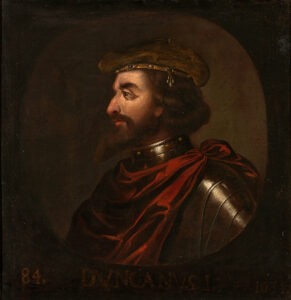
Duncan ascended the throne in AD1034 and today is best known as a character in Shakespeare’s Macbeth. The Annals of Tigernach states that he was killed by his own subjects ‘at an immature age’, which contradicts Shakespeare’s portrayal of him as an old man. Duncan married Suthen, the daughter of Siward, a Bernician overlord.
Henry of Huntingdon (a 12th-century historian) described Siward as “almost a giant in stature”. Duncan introduced Suthen’s Norse relatives into his court, much to the displeasure of his people.
As with previous kings, Duncan coveted Bernicia, the northern of the two Northumbrian kingdoms, and sought to annex it to Alba. In AD1039 his army invaded Northumbria, and laid siege to Durham. The invasion was a disaster, and Duncan’s troops were all but wiped out. His losses weakened him, and he was unable to put down a revolt in his own kingdom, which was led by Macbeth. Duncan was slain at the Battle of Pitgaveny near Elgin and Macbeth seized the throne.
The real Macbeth
Shakespeare’s depiction of Macbeth bore no resemblance to the real Macbeth, who ruled from AD1040 to AD1057. The Prophecy of Berchán says that, under his rule, Alba prospered. He even made a pilgrimage to Rome in AD1050. The real Macbeth’s wife (Lady Macbeth in the play) was Princess Gruoch, granddaughter of Kenneth III. By her first husband, she had a son called Lulach.
For all the prosperity, Macbeth’s reign was not peaceful. In AD1045 there was an uprising led by Crínán, Duncan’s father. It was put down and Crínán was killed.
In AD1054, Siward, Earl of Northumberland, invaded Alba in support of Malcolm, Donald I’s son, who claimed the throne. This led to the Battle of Dunsinane in Perthshire, which resulted in wholesale slaughter. Macbeth survived, but not for long. At the subsequent Battle of Lumphanan, Macbeth was mortally wounded.
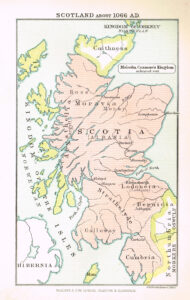
Lulach
If Malcolm thought that he would ascend the throne after his victory, he was mistaken. That honour went to Lulach, Gruoch’s son. He was the great grandson of Kenneth III, so had a claim on the throne.
We know next to nothing about him, apart from a few details of his coronation at Scone in August 1057 — the first recorded coronation of any King of Scots. His reign lasted only a few months before he was murdered by his successor, Malcolm III, in March of the following year.
Malcolm III
We are on familiar ground with Malcolm III (known as Canmore, meaning ‘bighead’ or ‘great chief’). By now, Scotland had begun replacing Alba as the name of the kingdom. Malcolm III ruled for 35 years, and during his reign William the Conqueror invaded England, bringing with him Norman families, who soon also penetrated Scotland.
According to Scottish chronicler John Fordun, Malcolm was sent to England for safety during this time, and stayed there for 17 years. Malcolm’s first wife was Ingibiorg, daughter of a Norwegian earl. However, she must have died some time before AD1069, as that year Malcolm married Margaret of Wessex, born in Hungary to an exiled English prince, and in 1250 she was canonised as St Margaret of Scotland.
A pious Roman Catholic, she introduced Benedictine monks into Dunfermline Abbey, and is still revered in Scotland today. By this time the city of Dunfermline in Fife was Scotland’s capital, and Malcolm had established himself there.
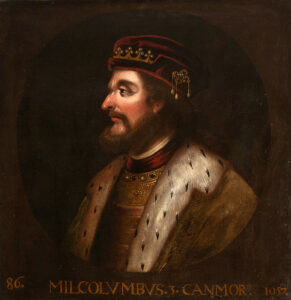
In AD1061 he plundered Lindisfarne. After that, he repeatedly raided England. He laid waste to Cumbria and what is now North Yorkshire, carrying off vast amounts of booty. In AD1093 he was slain in battle along with his son Edward in Alnwick, Northumberland. A stone cross now marks this spot.
DONALD III
Malcolm’s wish was that his son Edward should be his successor. However, according to John of Fordun, Donald, Malcolm’s brother, took advantage of Edward’s death and seized the throne. Born in 1033, he was in his early 60s at the time. Before returning to Scotland, he had spent many years in either Ireland or the Western Isles, fearful of being assassinated by Macbeth. He was greatly influenced by Celtic culture.
His reign possibly only lasted a few months. There are conflicting accounts of what happened next – some claim that in 1094 he was toppled by an English army led by Duncan, son of Malcolm III, and killed. Others say he was captured, blinded, and imprisoned, but eventually overcame the English army, and ascended the throne once more, expelling the English from his court, before dying in 1099.
He was eventually buried on Iona and was the last Scottish king to be buried there. Today he is remembered as Donalbain (‘Donald the Fair’), a minor character in Shakespeare’s Macbeth.
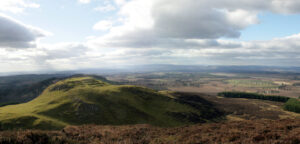
DUNCAN II
Duncan’s reign, like Malcolm’s and Donald’s was one driven by a dichotomy between the old Celtic ways versus those of Norman England. Duncan was of the England camp. He was the son of Malcolm III by his first wife Ingibiorg and had been brought up in England during his father’s time there. In 1072 he was placed under the protection of William the Conqueror. Because of this, he reintroduced English influence into the court.
He returned to Scotland in 1094, and either ascended the throne in the same year or when Donald III was killed in battle. The latter is the most likely.
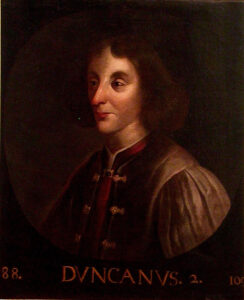
EDGAR
Edgar was the fourth son of Malcolm III and ruled from 1097 to 1107. The name Edgar, and that of his brothers, Edward, and Edmund, is of Anglo-Saxon origin, showing the influence that England was having on Scotland. He received support from William II and Henry I of England and supported his predecessor’s pro-English policy.
He was the first king to induce Norman knights to settle in his kingdom. During his reign, Magnus II of Norway sent a fleet into the seas off Western Scotland, and induced Edgar to cede all the Western Isles to Norway. Edgar never married, and there is confusion about his death in 1107.
One account states that he was killed by Malcolm’s brother, Donald III, but this is surely impossible, as Donald was already dead. Another account by the 12th-century Benedictine monk Orderic Vitalis says that he was killed by his brother, who became Alexander I.
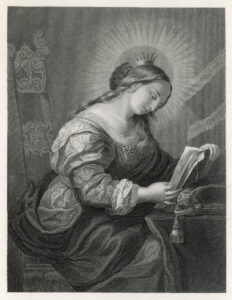
ALEXANDER I
Alexander ruled until 1124, when he was in his mid 40s. He was possibly the fourth or fifth son of Malcolm III and Margaret of Wessex.
His wife Siybilla was the illegitimate daughter of Henry I, another example of England’s increasing influence over the Scottish court.
As an ‘appanage’ Edgar had given David, another brother, the right to rule Scotland south of the Clyde and the Forth as the Earl of Strathclyde and of the Lothians. He gave Alexander the right to rule the rest of Scotland. The kingdom was therefore a ‘diarchy’, though Alexander was the titular head.
Both kings ruled together for 17 years until Alexander’s death.
The House of Dunkeld continued with David becoming king of all Scotland and being hailed by future generations as the finest ruler Scotland has ever had.
Our series on the Kings and Queens of Scotland will continue in the next issue of Scotland. Get your copy of the current issue, here.
Read more:

SCOTLAND MAGAZINE
Published six times a year, every issue of Scotland showcases its stunning landscapes and natural beauty, and delves deep into Scottish history. From mysterious clans and famous Scots (both past and present), to the hidden histories of the country’s greatest castles and houses, Scotland‘s pages brim with the soul and secrets of the country.
Scotland magazine captures the spirit of this wild and wonderful nation, explores its history and heritage and recommends great places to visit, so you feel at home here, wherever you are in the world.
